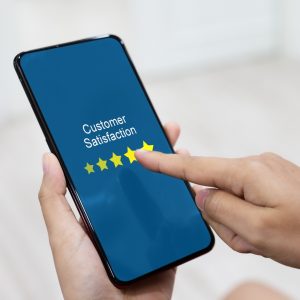How to Keep Customers Loyal

Customers are hard to come by and just as difficult to keep. Like television evolved from three major networks to an endless supply of content across thousands of channels and media platforms, the retail sector also boasts infinite options for potential consumers. This shift has created an environment of cutthroat competition between retailers, “e-tailers,” manufacturers, and third party resellers. These entities are all vying for a share of the same wallets, and at the same time, consumers have drastically changed their preferences. As John Furner, CEO of Walmart US, said so profoundly at the National Retail Federation’s Big Show in January, “Loyalty in retail is the absence of something better.” The erosion of loyalty is very real, and brands must be hyper-aware of their customers’ needs to retain those they’ve worked so hard (and paid so much) to attract.
What is causing the erosion of loyalty?
The reasons behind these rapid changes to consumer preference are clear. First, the global pandemic impacted out-of-home activity, and the closure of factories worldwide greatly impacted the supply chain. These instances caused consumers to seek alternative shopping methods and substitute products, respectively. As comfort levels increased, so did demand for products. This substantial increase in demand put yet another strain on the supply chain while simultaneously influencing a historic rise in inflation, both of which are ongoing today. Once again, consumers have been forced to seek alternatives. We are tired of our needs being unmet in this ever-changing world; thus, enter the endless search for “something better.”
Brands may not be able to retain 100% of their customers but there are tactics that can help mitigate the erosion of loyalty even amid uncontrollable external factors. Ultimately, the loss of a customer is the result of a poor experience. Frustrated customers look elsewhere for brands who understand and meet their variety of needs. More importantly, they ultimately remain loyal to the brands who stay attuned to those needs as they change and adjust their offerings to oblige.
How can brands mitigate eroding loyalty?
Omnipresence is a key facet to making sure customers can interact with brands any which way they desire. A Harvard Business Review study revealed that 73% of consumers use multiple channels during the shopping journey. The same study revealed that omnichannel shoppers are more valuable, spending 4% more than average in-store and 10% more online. Basically, the more channels through which a brand sells, the more likely any given customer will have their needs met in this regard. These preferences are largely rooted in convenience, a factor that the National Retail Federation stated would be a driving factor in consumer decision-making for 2022.
On another note, first party data is currently a major topic in the digital marketing world, but I promise not to talk about cookies or retargeting beyond this point. As mentioned earlier, brands who earn loyalty from their patrons do so by understanding needs and changing along with them. First party data is the key to that process. Collected and owned by the brand, this data can inform marketers of customers’ affinities and highlights the way they interact with digital properties such as websites and mobile applications. It allows brands to design websites that are more conducive to an optimal purchase path. More powerfully, first party data enables personalization in a variety of ways, such as the curation of loyalty programs and individualized experiences.
Loyalty programs are a popular tactic for attracting and retaining customers. However, according to McKinsey, 2 out of 3 fail to deliver value. Furthermore, some loyalty programs even detract from the value of the goods and services brands provide. When done right, however, loyalty programs can increase actionable first party data collection and revenue from subscribers. Those that fail most likely are not creating loyalty programs that provide value their customers seek. If you are going to spend time and money crafting loyalty programs to retain customers, it is wise to leverage first party data to understand what sort of value proposition will be reciprocated with repeat purchases.
Similarly, individualized experiences tap into the most essential aspect of understanding consumer needs: consumers care about themselves first and foremost. They care about brands insomuch as brands provide them what they need. When that ceases, so does the existence of loyalty. A strong majority of consumers expect personalization (71%), become frustrated when it is lacking (76%), and are more likely to refer friends and repeat purchases with brands that personalize (78%), according to a McKinsey report. A prime example of personalization is the leveraging of first party data to present consumers with product suggestions and content that are relevant to their interests. Personalized product recommendations can decrease cart abandonment and increase average order value (BigCommerce). This type of personalization boosts convenience by allowing prospective buyers to find the right products more efficiently while increasing the opportunity for brands to upsell. Everybody wins.
In summary, keep customers by continually learning about them and creating experiences that satisfy their needs. Fight the temptation to become complacent, reevaluate personas constantly, and offer truly desired interactions. Your customers are telling you what they want. The answers are in the data. You just need to collect, analyze, and act on the insights.
For more information contact us.


